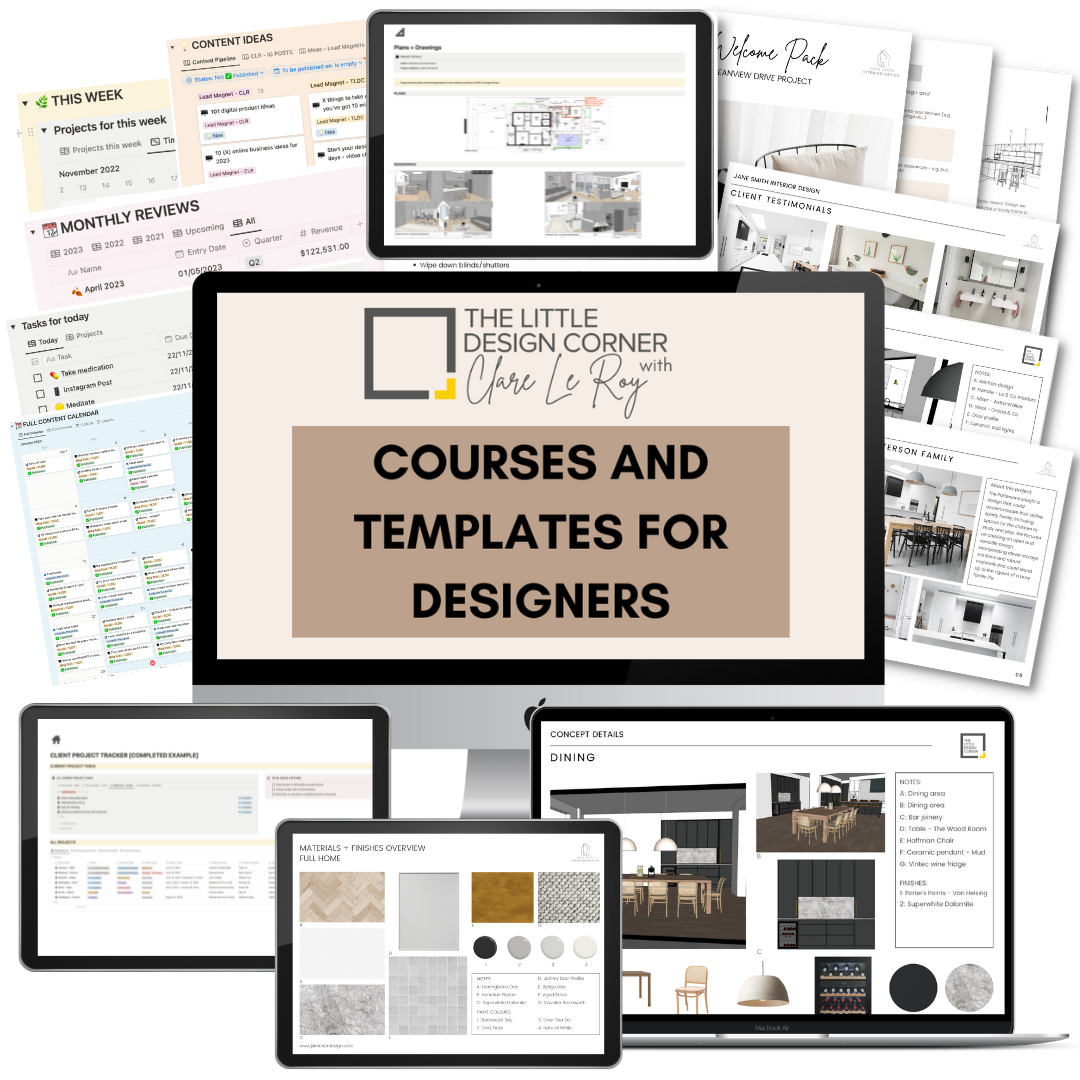Time is Money: Things Designers Should Be Charging For
As an interior designer, your creativity and expertise are your most valuable assets. However, to ensure that your business thrives, it's crucial to recognise the importance of valuing your time and services appropriately.
Many designers overlook certain aspects of their work that should be billable and in this post I share some examples of things you may not be billing for, but should be in order to maximise your earning potential.
1: Initial Design Consultation
The first meeting with a client sets the tone for the entire project. This is where you assess their needs, offer your expert advice and begin the creative process. Charging for this initial consultation underlines its value and your professionalism. It also filters out clients who aren't serious about investing in quality design services.
Read more about this topic in THIS BLOG POST
2: Changes to Scope
Scope creep is a common issue in interior design projects. When a client requests changes that go beyond the initially agreed scope, these should be billed accordingly. Clearly outline in your contract how scope adjustments will be handled and charged to avoid misunderstandings.
3: Site Visits
Visiting the project site is a crucial part of your job. Whether it’s for initial assessments, mid project checks or final walkthroughs, these visits require your time and expertise. Charging for site visits compensates for the time spent on site and the insights you provide during these visits.
4: Revisions Beyond Contract Terms
Be clear about how many revisions are included in your initial fee (this should be included in your contract/design agreement and reiterated in you Client Welcome Pack). Any additional revisions requested by the client should be charged. This not only compensates for your extra time but also encourages clients to provide comprehensive feedback in the initial stages and avoids them wasting your time with lots of back and forth.
5: Administrative Work
The administrative side of design work, such as invoicing, emailing, phone calls and other communication, often goes unpaid. Consider incorporating a fee for these tasks or factor them into your overall pricing. Your expertise isn't just in design, it's also in managing the project efficiently as well.
6: Travel Time
If your project requires significant travel, this time should be compensated. Whether it’s local trips to suppliers or longer distances to project sites, this is time that could be spent on other revenue generating activities. Make sure to build travel time into your fee if there will be a lot included in a project.
7: Rush Fees for Expedited Services
When a client needs something in a hurry, it often means rearranging your schedule and putting in extra hours. Charging a rush fee is standard in many industries and should be part of your pricing strategy. It recognises the extra effort and potential disruption to your workflow.
Remember, as an interior designer, your time, expertise and the unique value you bring to each project are worth charging for.
By ensuring you're compensated for all aspects of your work, you’re not only respecting your own professional worth but also educating clients about the value of your services (and your time!).
Thanks for reading and catch you in my next post :)
Clare x
Dr Clare Le Roy
Courses and Templates for Designers and Architects
DO YOU WANT TO….
Improve your professionalism?
Find more clients?
Bring in more revenue?
Create better systems and processes?
Then check out my business courses and templates for designers and architects.
These courses and templates leave you with work done - not just a long list of things you need to do next. We have a really strong focus on taking action and getting things created that improve your business.








